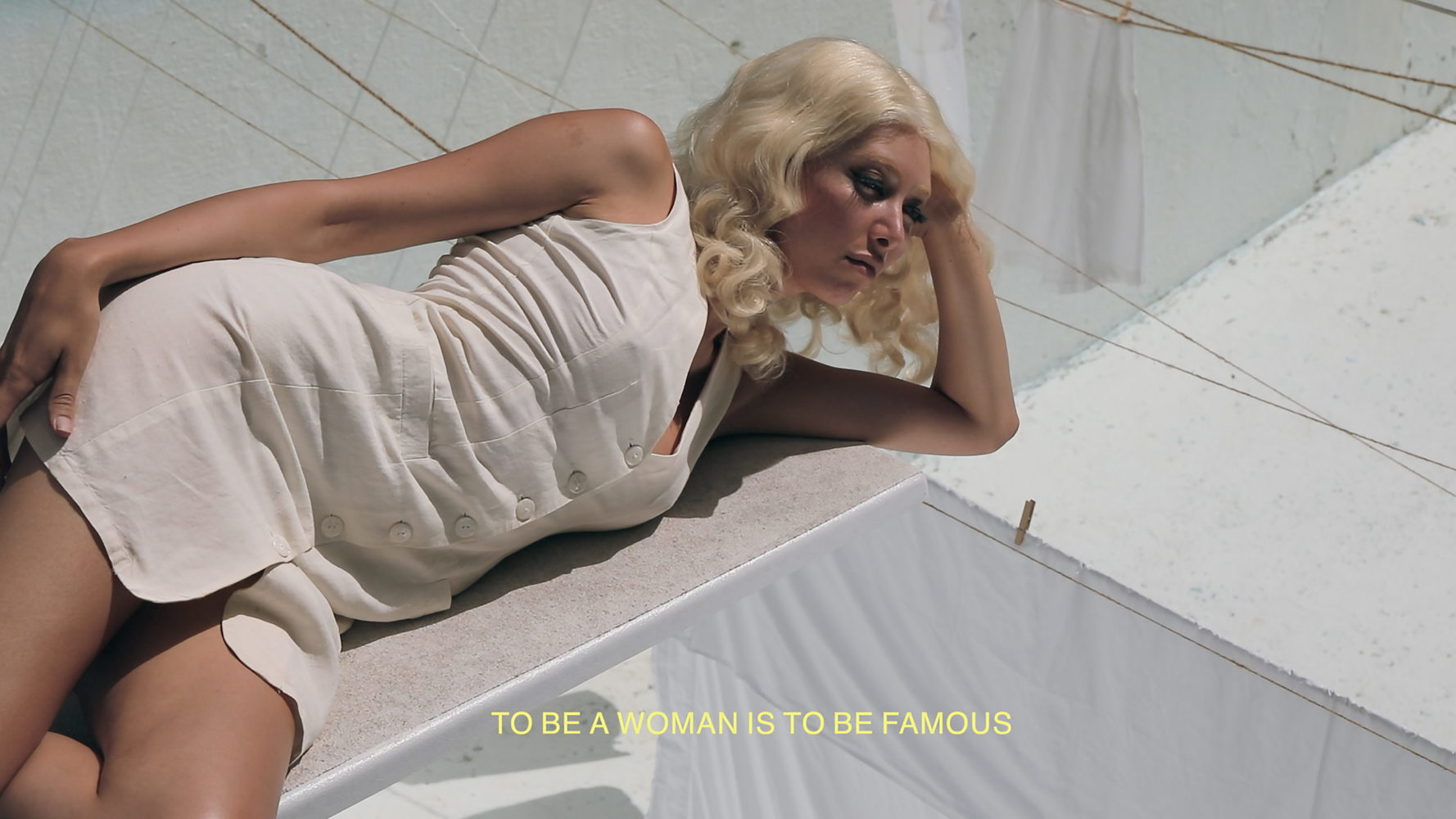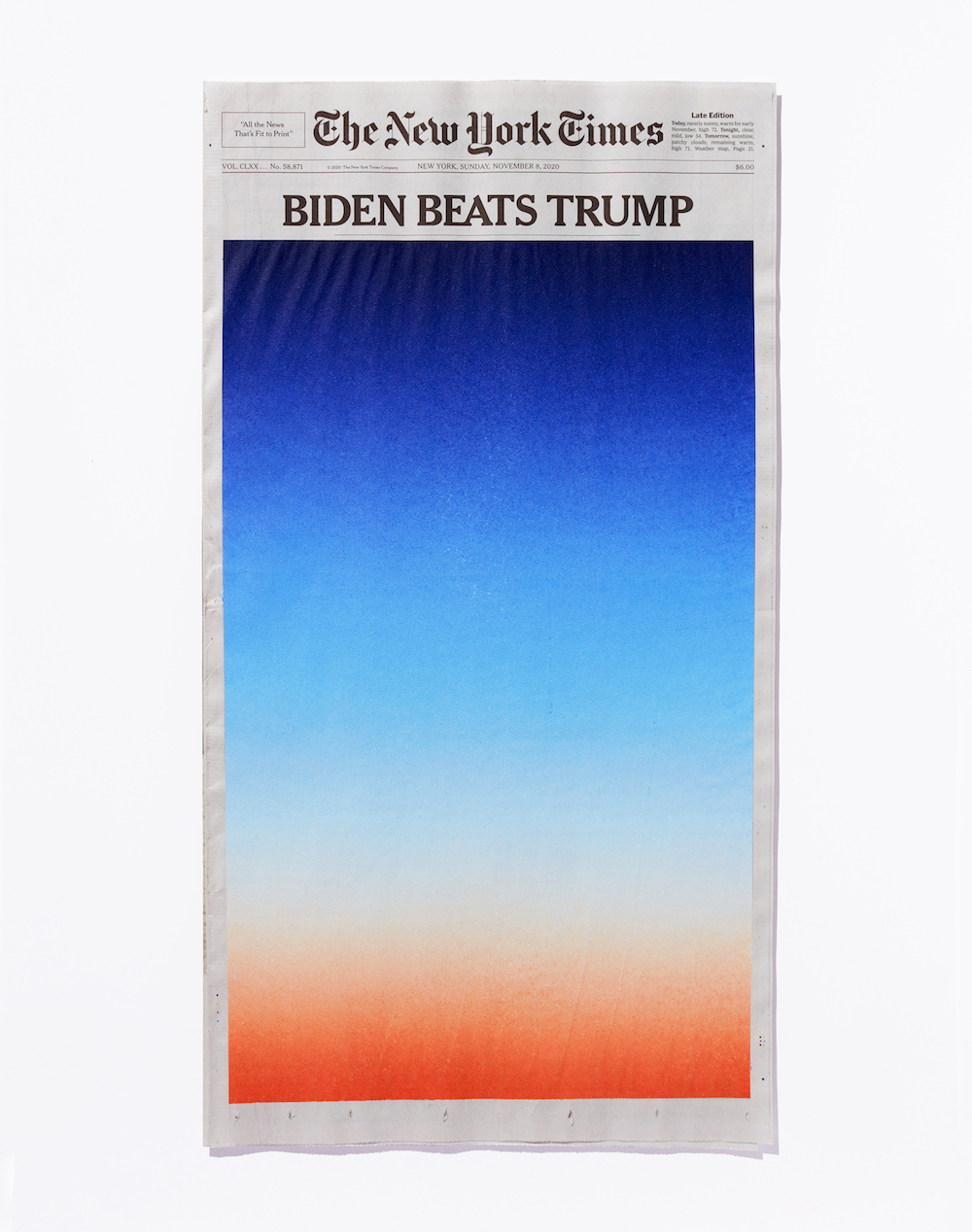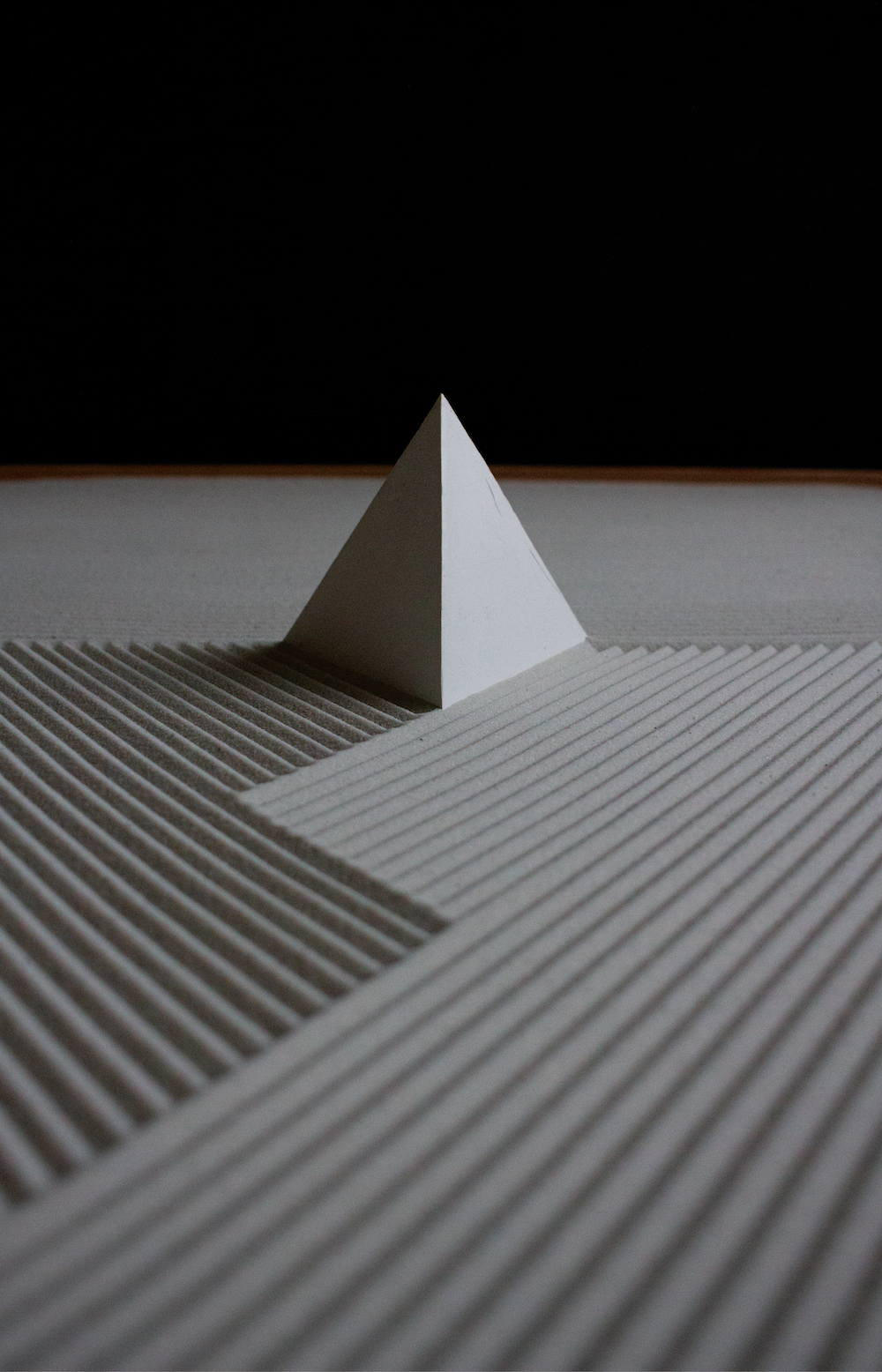The circumstances of the past year did not slow down the output of artist Martine Gutierrez. Fresh from the critically acclaimed INDIGENOUS WOMAN magazine, which she art-directed, edited, starred in, and completely produced, Gutierrez is completely at home working solo. And she did so in writing, directing, starring in, scoring, set-designing, and more for the recent film CHINA DOLL, which debuted virtually in February as part of her exhibition “CHINA DOLL, Rated R,” presented by Ryan Lee Gallery.
Gutierrez, being the artist she is, did not create a typical online show with a slideshow here and a few extra details there. She utilized gamer software to create a labyrinthine experience she described as part M.C. Escher, part catwalk. It was also part performance, with voyeuristic participation and surveillance. Before entering the show, users were asked if they would “Let Martine watch?” with the artist having the chance when logged on to see how her viewers were responding.
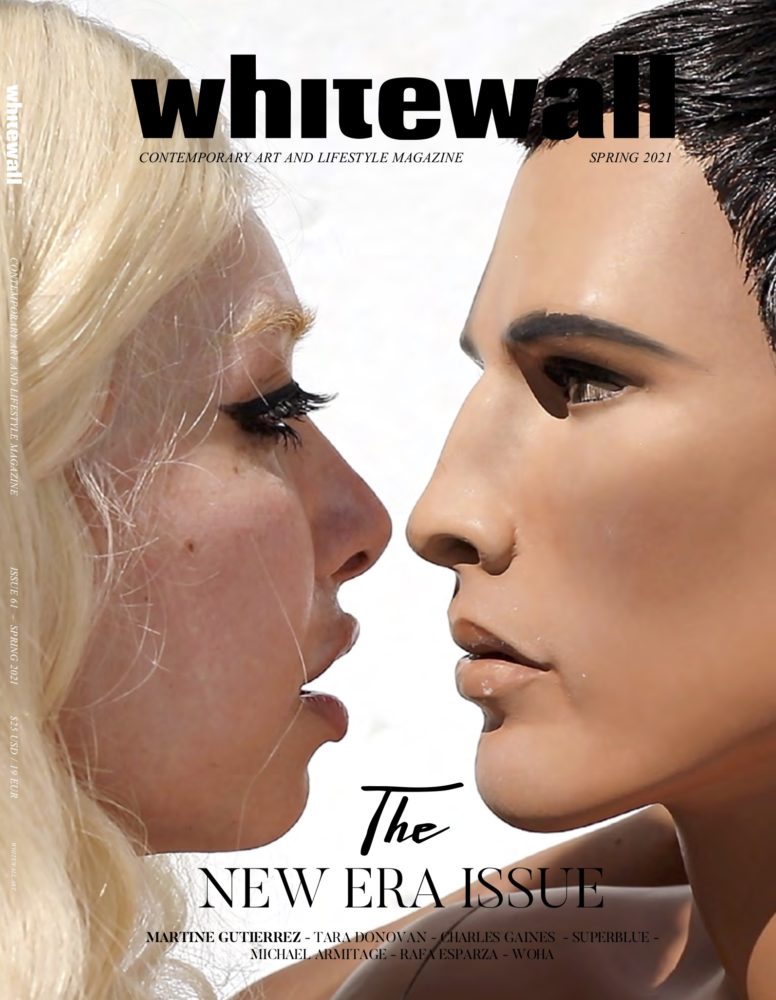
“CHINA DOLL” a film by Martine Gutierrez, 2021, © Martine Gutierrez, courtesy of the artist and RYAN LEE Gallery, New York.
Whitewall caught up with Gutierrez—who has forthcoming projects at the Whitney, at Crystal Bridges, and with Public Art Fund—just as the virtual show debuted. We discussed her simultaneously prolific creative output and proclivity for working autonomously while referencing French cinema and cult classics like Showgirls in equal measure.
WHITEWALL: What was the starting point for “CHINA DOLL, Rated R”?
MARTINE GUTIERREZ: Well, the circumstance being quarantine, Ryan Lee suggested my next show be online, but I wasn’t inspired by the online venues I’d been attending, so we agreed I’d have to construct something new. Imagine M.C. Escher designing a catwalk for Versace, very much the spirit when inside. My practice has been a solitary one, so the past year of isolation hasn’t stopped me from producing work.
WW: You’ve also made a film, titled CHINA DOLL, which you directed, scored, produced original music for, set-designed, constructed costumes for, and starred in alongside a cast of mannequins. After producing INDIGENOUS WOMAN, a magazine you governed with parallel autonomy, would you ever be in someone else’s work?
MG: I’ve said before that if anyone was going to objectify me, it would be me. I know I sound like Nomi Malone, famously in denial, “I say who, I say when,” but marginalized people are always used to assume allyship. I really only grant my access to friends. Currently, I’m actually acting in a role I did not write, for a character I do not dress, on a TV show filmed in a country I’d never been to. It was so fun.
WW: What show?
MG: I’m not sure; my NDA was void because COVID canceled everything, deporting everyone back to the States. It’s an HBO show, and it’s in Spanish. A very talented, very sexy friend, who writes and stars in the show, DM’d me, asking if I would be interested in a guest role, and I obviously said yes. But when I got to Chile I gagged because I was written into every episode. I had a script, a trailer, call times, fittings, makeup tests—it was very Hollywood.
I learned a lot while watching the show be made. I think it inspired the confidence to cast myself as the ingenue in CHINA DOLL. To commit in motion, in a way that a photograph forgives.
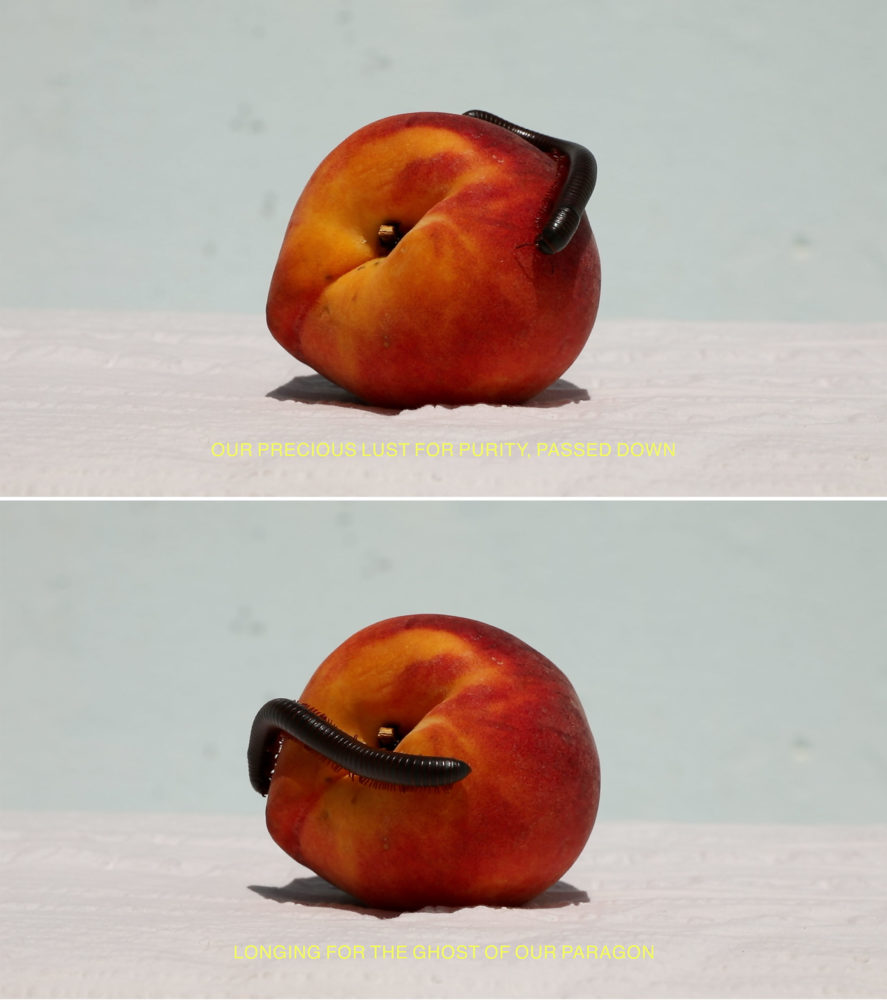
“CHINA DOLL” a film by Martine Gutierrez, 2021, © Martine Gutierrez, courtesy of the artist and RYAN LEE Gallery, New York.
WW: So how did you want to approach the film CHINA DOLL?
MG: Everything pivoted off the writing. I didn’t know what I was writing. It started as a poem, and then it became a play. But with no live performers and no audience, it was clear the play would need to be adapted into film, and the film would need a digital platform to stream on—in part because of the graphic nature, but also just to be chic.
WW: What was it like being both director and actor?
MG: I think I end up pushing myself inappropriately. I don’t know if it’s good or bad. It becomes difficult to draw a line or a boundary when you only have to ask yourself for consent. No one else is there to weigh risk or judgment. It’s a kind of freedom, but in a vacuum, like permission to be privately problematic. Perhaps a director’s dream.
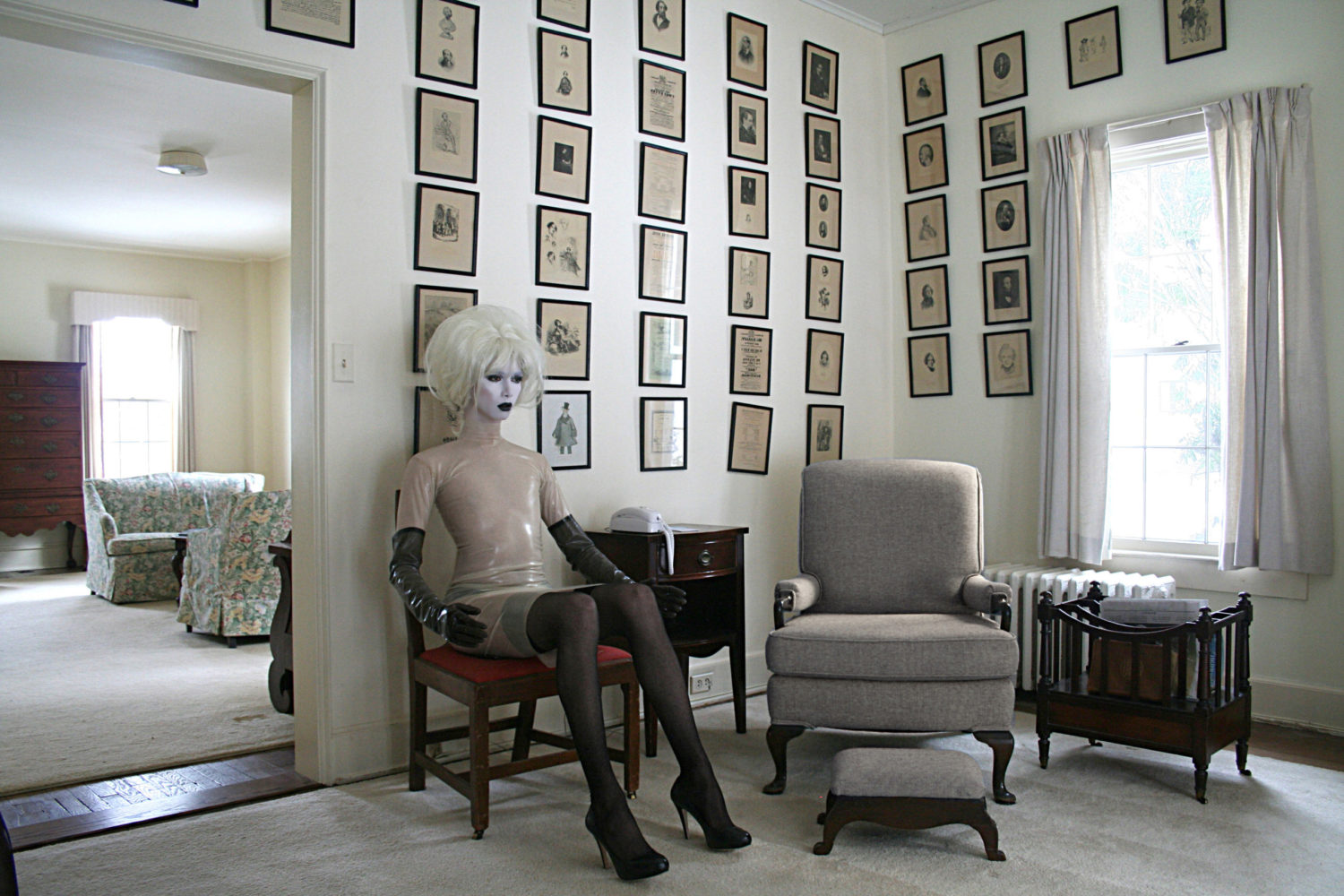
Martine Gutierrez, “Real Doll, Luxx 2,” 2013, © Martine Gutierrez, courtesy of the artist and RYAN LEE Gallery, New York.
WW: How did you want it to ft within the virtual exhibition?
MG: The exhibit was built using gamer software, so every viewer enters the labyrinth with the ability to navigate at their own pace, and virtually tour the installed works, at scale. The hidden discovery was realizing the exhibit was infinitely looped, which a viewer only negotiates once arriving at the same photograph for the second or third time.
As part of the tutorial when logging on, viewers were given the option to consent to me watching them. It literally said, “Let Martine watch?” Very “I’ll show you mine, if you show me yours.” No one knew when I was online. It was only if we were both logged on at the same time that their in-device cameras could stream to my URL’s account. Viewers also had the choice to deny, but most didn’t.
WW: How did your previous project INDIGENOUS WOMAN, and the reaction to it, lead to CHINA DOLL?
MG: I suspect it’s the pendulum swinging the other way. As soon as we name something we summon its antithesis. It’s a law of nature: By manifesting anything, you cast into existence its foil. Which is always my caution in speaking on my transition, because it’s dangerous when we collectively consider one perspective an authority on an experience. I don’t know what being trans or Latinx is—most of the time I feel like neither.
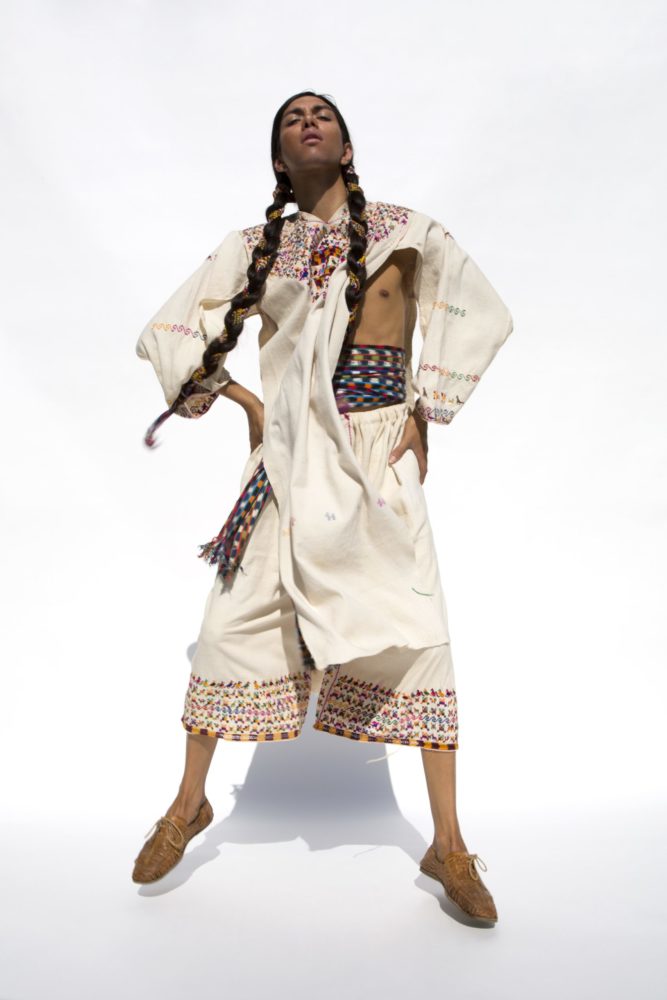
Martine Gutierrez, “Neo-Indeo, Mam Sets Are The Breast,” page 32 from INDIGENOUS WOMAN, 2018, © Martine Gutierrez, courtesy of the artist and RYAN LEE Gallery, New York.
WW: In your artist statement, you write that “CHINA DOLL” is the experience of wanting to be “the image” so badly that you sacrifice what you truly need. Why did you want to address this experience?
MG: I don’t know if it was a want as much as a need. In crises we are often forced to re-evaluate our lives. Going blonde was as much Britney, circa shaving her head, as it was The Matrix, when Neo jumps inside Agent Smith to defeat him. Quite literally, “becoming the mold to break her.”
As a blonde, I really feel like I can embody the bombshell in a way that I’ve never had access to, not just with black hair, but previously navigating as a nonbinary queen. My drag is unwittingly chemical now, which feels different publicly. Imagine all you know is swimming, but slowly the water drains until there’s less and less; only when it’s gone would you understand the resistance of the world you’ve fought against. And yet it’s the same street, the same store, same neighborhood. It illustrates how visible privilege is when you are invisible. I suppose I was always a threat, only now my audience has changed. I feel dangerous. It’s wild to witness your body in bloom when you’re still learning to identifying it as your own. I suspect this is how artificial intelligence will feel, at odds with their fleshy bits. We all know women are rarely afforded value when not objectified, but to experience it firsthand is very different. Of course, it’s my privilege to be critical.
WW: What was the inspiration behind your new “Plastics” series?
MG: I think aesthetically the plastic series is more confrontational, in part because the illusion is simultaneously being broken as the image is made. In place of embodiment, which refines an illusion to bring it to life, “Plastics” attempts to convince you that these applications of beauty are real, but in doing so points out their own artifice.
WW: How does your music practice inform your performance and visual art practice?
MG: It’s just another venue to illustrate. I think sound has probably the most profound ability to communicate and affect emotion—how a song can really lift your spirits or make you cry. I actually wrote the music for CHINA DOLL years ago, with the intention of setting choreography to it. Rediscovering it among archives was an “ah-ha” moment. Filming with a soundtrack very much dictated pace, both for my acting and editing.
I was watching a lot of Italian and French cinema for how they do lighting and sound recording. A guy from Rome once told me, in most of those films, in the sixties and seventies they just record everything after. He said Italians are famous for “We’ll do it later.” I loved that sensibility. Acting with no one behind the camera is logistically a nightmare, but is made easier if you don’t have to worry about sound. Memorizing my lines was hard enough.
Sound goes beyond actors. I was rerecording almost every environmental sound. There are definite ASMR moments in CHINA DOLL, liberties that elaborate on tactile moments, to really make touch dry, or spit wet, or bugs creepy.
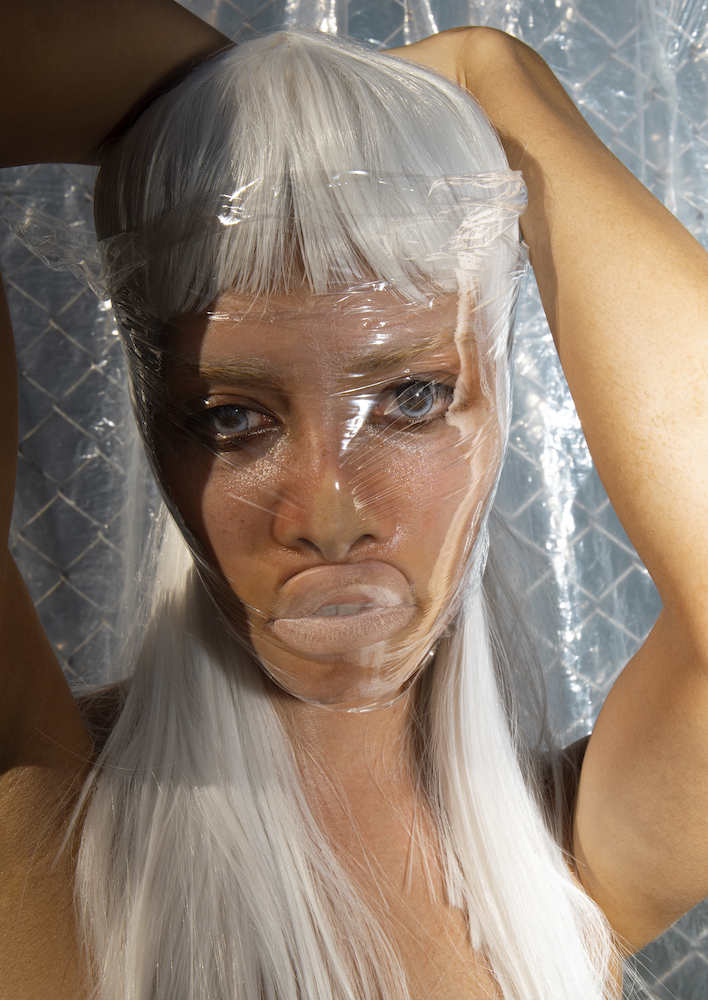
Martine Gutierrez, “Plastics, Xion,” 2020, © Martine Gutierrez, courtesy of the artist and RYAN LEE Gallery, New York.
WW: You’ve worked with mannequins in previous work. What was it like working with them on a film, versus creating a still image?
MG: There’s a lot of control and power when working with mannequins. Everything becomes more deliberate. I have to hang up all the laundry every day and take it down. It’s not just building the set; it’s my obligation. If it rains, I have to carry everyone inside, dress them, undress them. Move them out of the sun so they don’t burn. The sex scenes, like every other scene, depended on me to activate them.
WW: You initially called the film a play. Would you ever consider bringing
CHINA DOLL onto the stage?
MG: Omg, imagine!? I do a performance of it after the world vaccinates, off-Broadway!? It would be shocking. One night, two performances. I don’t even announce it.
WW: Well, 2021 is already busy for you. What can we expect of your upcoming performance at Crystal Bridges?
MG: It is a confirmed collaboration with artist and muse WangShui. We met at a friend’s wedding a few years ago and instantly merged. I didn’t even know our practices shared so many parallels. We are currently conceiving an immersive one-night spectacular that is a part of a greater work altogether.
WW: What do you have planned for the Whitney billboard later this year?
MG: Picture if you can, Ariana Grande in a Victoria’s Secret campaign, and then subvert it.
WW: You also have an upcoming exhibition with Public Art Fund. What is it like for you to create a public work?
MG: PAF will be a campaign of sorts titled ANTI-ICON, explicitly occupying bus shelters across New York City. In a new century of censorship, you can imagine that I’m toeing the line of what is “appropriate.” It’s new for me to produce public commissions, especially because imagery of PAF or the Whitney is subject to approval. It’s ironic to constantly use the symbology of consumerism, without ever having to please a real client. I’m only ever considering the opinion of one boss, myself.
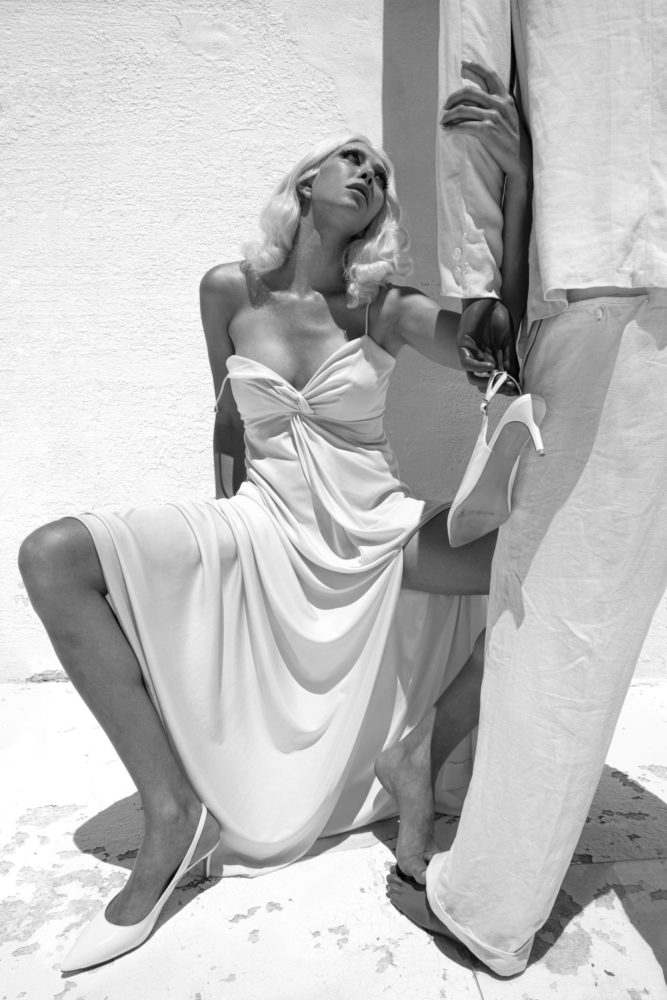
Martine Gutierrez, “Body En Thrall, Blonde Shoe,” 2020, © Martine Gutierrez, courtesy of the artist and RYAN LEE Gallery, New York.


